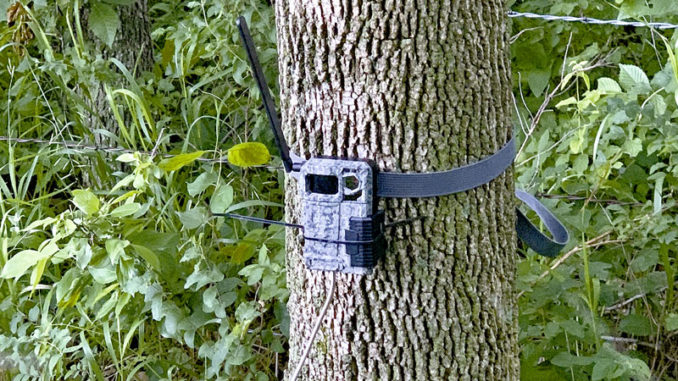
High-tech doesn’t necessarily mean high dollar
In today’s world, technological advances are making leaps and bounds in every part of our lives. Not only is technology making everyday tasks easier and more fluid, it’s also becoming economical. So everyone has access to the latest.
This couldn’t be any clearer than in the cellular trail-camera market, where hunters can have instant access to photos on their cell phones.
Trail cameras have revolutionized the way we deer hunt, but at a price. When they first entered the marketplace, they had a stout price tag. And the new tech was expensive to use in the form of batteries and photo finishing. Then, when cellular trail cameras arrived, the advance in technology was about as good as it gets.
With a cellular model, hunters can set up a series of units across their hunting properties. They can have cameras on their food plots, trail crossings, water holes or on a hot scrape. Hunters can let them work without coming back to check them. One of the major issues with trail cameras is having to come back every week to download the images. It’s an additional disturbance that has the potential to disrupt the natural movement of deer around a stand site, scrape line or food source.
Costs have come down significantly on hardware and service plans
The invention of the cellular system is ideal for all hunters, whether hunting behind their house or several states away. Most hunters hunt within 90 minutes of home. But some hunters participate in land leases in the midwest or as far north as Canada. The cellular system can enable hunters to get instant feedback with very little effort.
But cellular systems didn’t come cheap on the front end or the back end. These cameras were not only the most-expensive units on the market, they’ve also been historically the most-expensive units to operate due to the necessity of a telephone plan for each camera or system of cameras. Most monthly plans started at $30 and went up from there. Cellular plans have always been expensive for a personal phone. And it took deep pockets to afford multiple phone plans to operate a series of cellular trail cameras — until now.
The newer models available today have the option of setting up a monthly plan service or a pay-as-you-use service. Spypoint is one of the premier cellular trail-camera companies. It offers very inexpensive cameras and flexible monitoring rates that hunters of every economical background can afford.
Spypoint offers the most-flexible data plans imaginable, on a monthly or annual basis without any activation fees. In fact, for 100 photos per month, it is completely free. They have monthly plans that range from $4 to $15.
In 2019, Spypoint came out with the Link-Micro. It’s the smallest and most-affordable cellular trail-camera system currently on the market.
With lower all-around costs, these cameras are the perfect option for hunters operating locally or a long way from home.
Fresh seed makes a difference:
Most agricultural products like fertilizer, herbicides, and other soil amendments are packaged inert. So they have very long shelf lives. However, seed isn’t like that at all. Seeds can be perishable and will have a much-higher germination ratio if fresh in their prime condition.
All seeds can stay viable if packaged and stored appropriately for up to a year. Sometimes, certain seeds can remain viable for several years under the right conditions. The storage condition is the key. Most garden vegetables are stored in sealed packages for small-end, backyard growers. These seeds are stored in an air-tight condition and are often in controlled climate environments. They will generally stay viable well past the packaged date.
On the other hand, most agriculture seeds are stored in much-larger quantities, usually in 20- to 30-pound bags that are usually not totally airtight. They’re often stored in warehouses where the temperature and humidity is controlled by Mother Nature. Always check the date on the bag to see when the seed was packaged for the best outcome. Seed packaged after the last year’s harvest will have the best germination ratio over seed several years old.
Click here for some strange photos caught on trail cameras.

